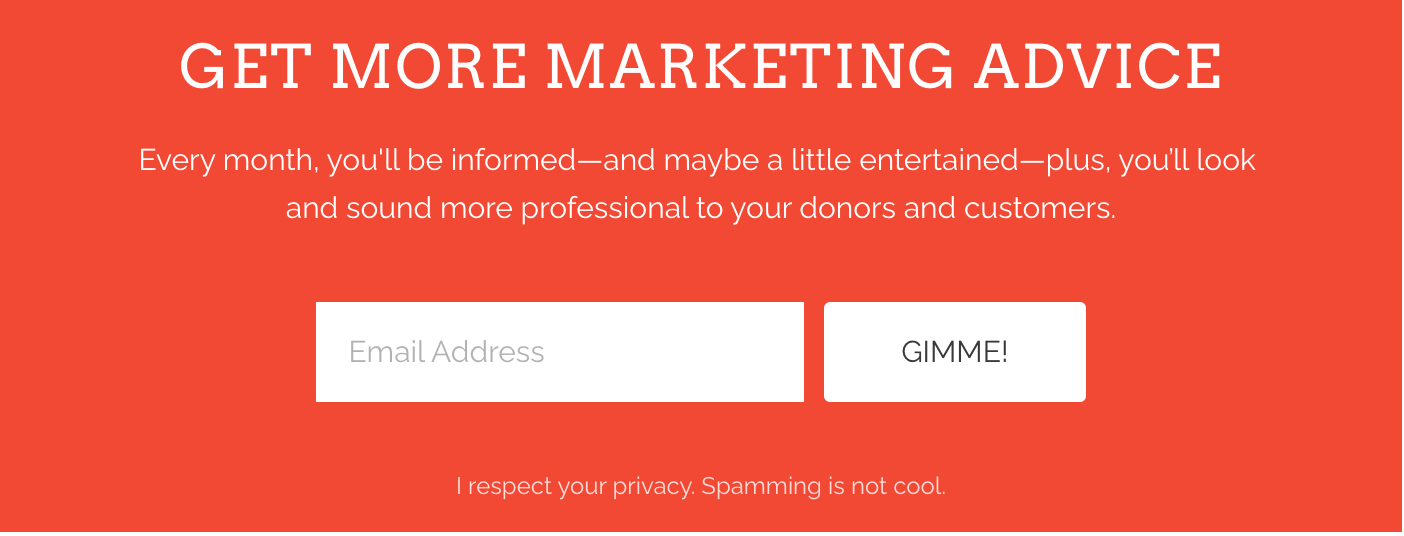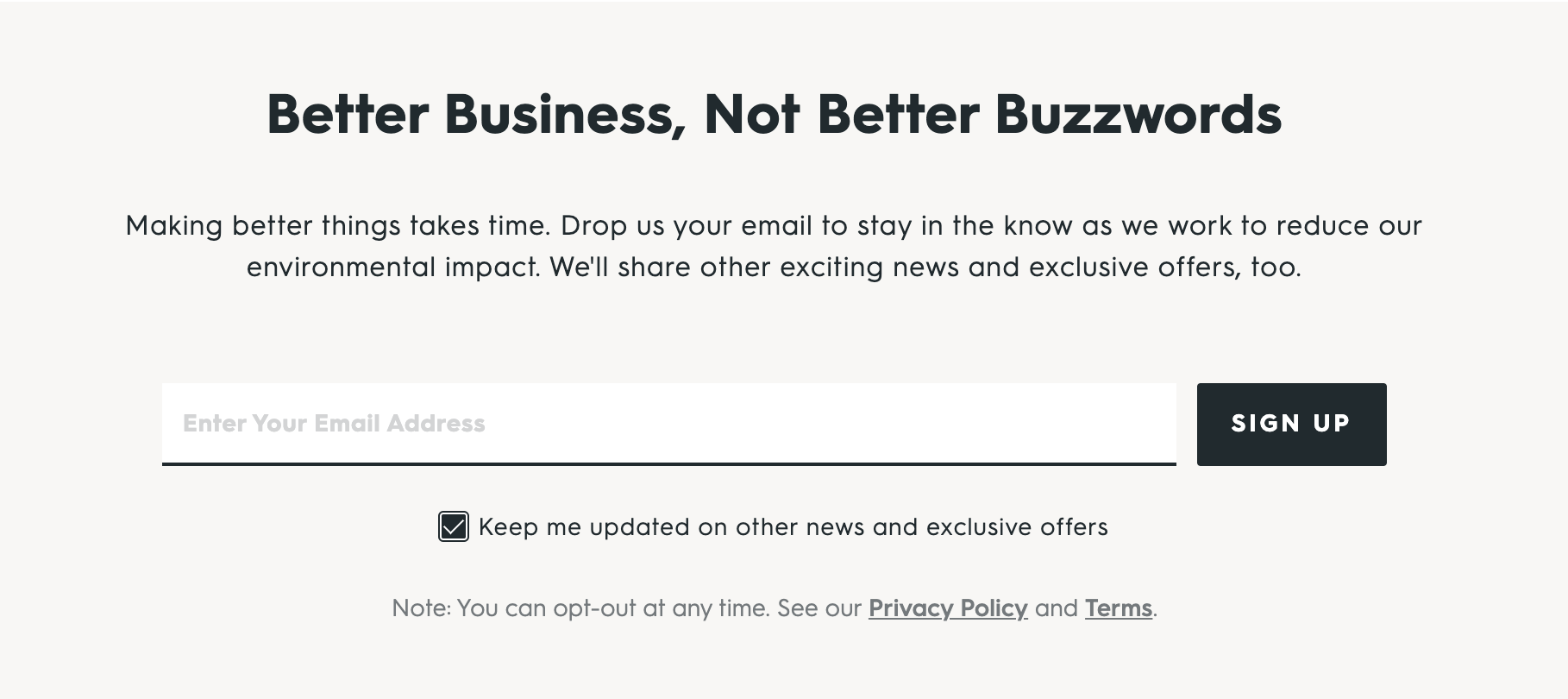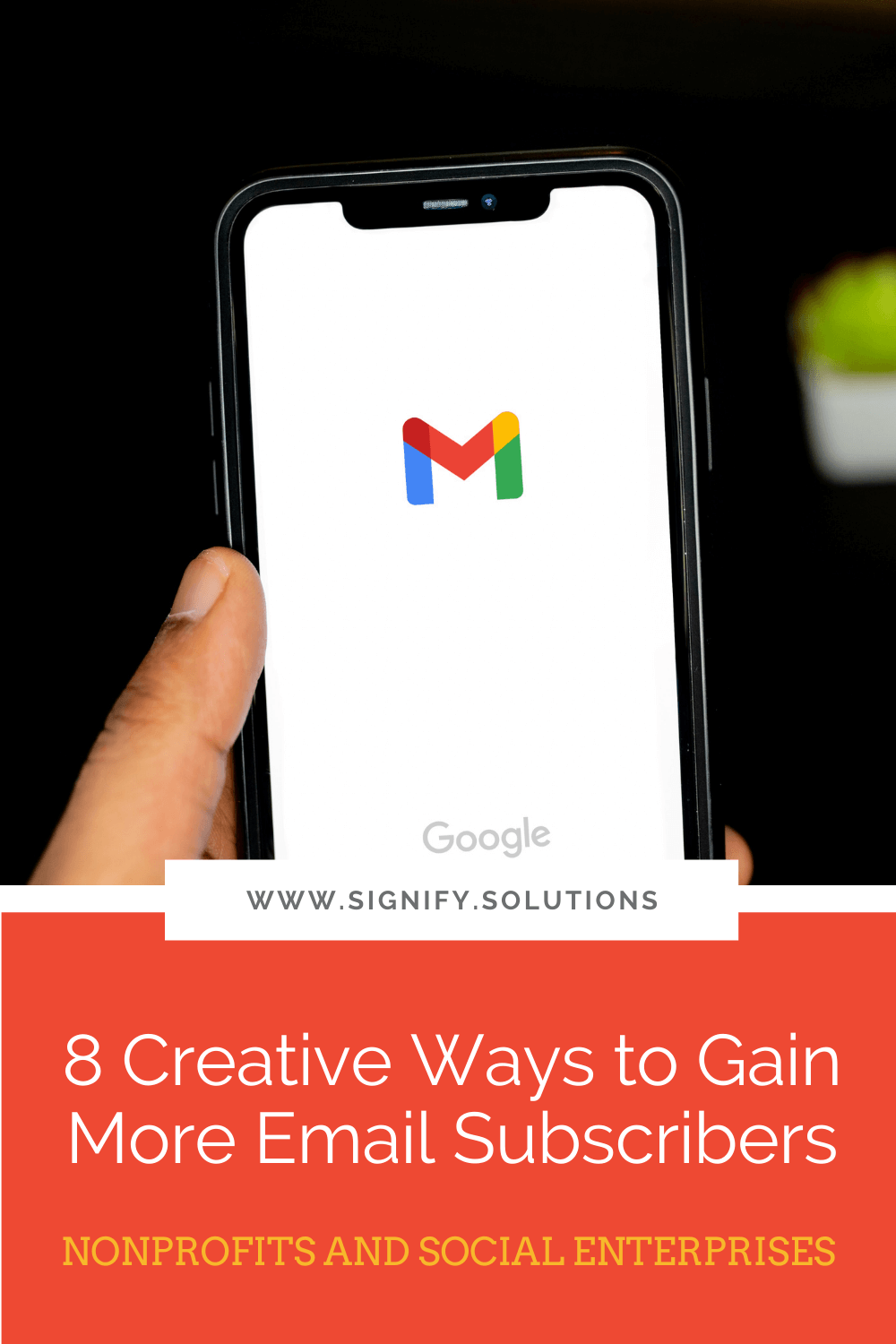In a world where almost everything is accessible online, standing out and drawing people to your website is imperative to keep your mission moving forward. Gaining loyal customers or donors means keeping them in the know through your blog, newsletter, or eblasts. But first, you have to get their email address.
Between all the blogs, online shops, and websites, all of our inboxes are already crowded with marketing emails asking for sales and donations, and the old classic “Sign up for my newsletter!” call to action just isn’t cutting it anymore.
You need strong, creative, and enticing messaging on your opt-in forms so you can grab that email address, stay in touch with someone, and educate them on your mission. (An opt-in is when someone signs up to receive emails and ongoing communication about products, services, or information from your organization.)
Those fields that you see at the end of marketing emails or on websites asking for your email are opt-in forms, and utilizing them correctly is becoming more and more important. Consumers and donors are reluctant to add more clutter to their inbox, so your audience needs to know what they’re getting and why they’ll benefit right from the start.
Here are eight creative alternative ways to get new email subscribers and not get sent to spam.
1) OFFER AN INCENTIVE IN RETURN
This is a big one! People love an incentive. Give them something in return for the email address they’re giving to you.
If you’re on the TOMS website shopping for shoes, you’d probably love to win a free pair (and who doesn’t love free things?!).
LeeAnne of Change the World by How You Shop hosts a different giveaway each month by collaborating with brands featured on her site. This is a great way to build your email list!
(PSST—If you haven’t read LeeAnne’s recent guest post on turning customers and donors into passionate fans, you should definitely do that!)
This one from Plywood hits multiple points: It’s descriptive, offers an incentive, and is exclusive!
Giveaways, discounts, free downloads, and special products are all great incentives for enticing someone to join your mailing list.
2) DESCRIBE WHAT PEOPLE CAN EXPECT
If you’re clear in your messaging about what people can expect to get from you (hopefully on a consistent basis), it’s more likely that they’ll opt-in. Tell them what to expect and how it’ll help them.
There’s full transparency in this example. You know just what you’ll get from Habitat for Humanity’s emails—how delightful!
Take a page from my own book! In this example, I state exactly what people can expect in their Inbox, how it will help them, and how often they’ll receive emails, too.
This example from Thyme 4 Friends not only addresses the problems that its audience is facing, but tells them what to expect from upcoming emails.
Bonus, this one from Warby Parker is also super short and direct!
3) ENTICE PEOPLE AND MAKE IT FUN!
Fun, witty, creative wording grabs people’s attention and makes them more eager to hear from you. Make them laugh and they’ll be excited to open your emails.
Who doesn’t love Ben & Jerry’s? Their messaging is so fun!
Alex’s Lemonade Stand plays up their mission and their roots while encouraging people to join the fight against childhood cancer, a very worthy cause.
Punny and includes a fun quiz? Yes, please! And quizzes are very popular right now. While not directly calling for people to join their newsletter, Bombas still requires an email address to receive the results. (Most people do . . . and you get added to their email list at the same time.)
When appropriate, let some humor shine through to connect with your audience. It’s a welcome and fresh reprieve from more serious, cut and dry marketing efforts, especially among younger generations.
4) SHOW PROOF
Throw a few stats or social proof in the mix. This makes you more credible to potential donors and customers and helps convince them that they need to stay informed about your organization.
Highlighting how many subscribers you already have, as Cru does here, can be a good way to grab people's attention and make them want to be part of your crowd.
Girl Scouts demonstrates that their content is proven to help you, which can make parents more curious as to what they have to say.
5) KEEP IT SHORT AND SWEET
Keep it simple! Our eyes can glaze over long paragraphs, so keep it to a minimum. You want them to get the gist quickly. Try using just a few compelling key words to convey your point and get those email subscribers.
Everyone wants to actually enjoy reading their emails, right? The Good Trade has a simple, clean opt-in form.
Also from The Good Trade, this one highlights that you can expect uplifting content in just one sentence. We all want to hear more good news these days.
The two examples above are also great because they convey that their content is light and enjoyable in addition to beneficial.
So Worth Loving wants you to know that they are there to help you through the hard times, and “embrace” and “empower” are two incredible words that pack a punch.
6) MAKE IT EXCLUSIVE
Creating a sense of exclusivity makes people feel special, and incentivizes them to sign up so they don’t miss anything. FOMO is real!
By using the word “insider,” Causeartist makes their content exclusive and lets you know there are special things you’ll hear about by opting into their emails that you otherwise wouldn’t.
Baronfig highlights that you’ll be the first to know about their new products, limited releases, and more exclusive content if you sign up for their newsletter. And they keep it brief!
Similarly, State Bags also makes use of exclusivity here, and lets you know exactly what to expect from their emails. A win win!
Allbirds has a great form here. They describe what you can expect to see, have a catchy header, and highlight the exclusivity of joining their list. Sounds like more insider discounts!
7) PLAY TO EMOTION
This is especially effective if you’re a nonprofit. Appeal to people’s emotions. Why should they care? What do they need to know about? How will your emails keep them informed?
This one from Thorn is simple in design yet still descriptive. It asserts their mission clearly and appeals to a supporter’s values.
New Story Charity makes sure potential donors know that 100% of their donations really go to helping families in need and encourages people to stay in the know so they can be part of the solution.
The call to action in Malala Fund’s newsletter form is super gripping and impactful. It makes you want to step up and join the fight.
8) INSPIRE YOUR AUDIENCE
Use empowering and inspiring messaging that will make people want to be a part of your mission—and stay up to date on it!
Goodgigs uses action-forward, empowering messaging to gain more subscribers. (And they’re upfront with how often people can expect to receive emails!)
BuildOn’s method here is clear, informative, and powerful. They’re letting you know that by joining their email list, you’re becoming part of something big and impactful.
Simple, effective, brief. Preemptive Love cuts right to the chase and further demonstrates their mission, inspiring people to take action.
A Few More Tips for Getting More Emails
Here are a few more tips to consider when formulating the perfect opt-in messaging:
Tell people how many emails they’ll get. Remove the fear of constant spam by being straightforward with how many emails you’ll send them over a specific time, or even give them an option! (ex: Receive weekly updates.)
Match your messaging to the page people land on. If your form is on a blog post, personalize it to the content they’re currently reading. Since they’re already loving what they’re seeing, this will increase chances that they sign up for future emails.
Make your call to action (CTA) button clear and creative. Avoid the typical “Subscribe” or “Enter” text on your button and jazz it up to match your organization’s mission or personality!
Have multiple points of capture on your website. Keep a form on the bottom of your home page, at the end of your blog posts, anywhere you can! There should be several of them sprinkled throughout your site since people will navigate your website in different ways.
Don’t ask for a ton of info. The more info you ask for, the less sign-ups you’ll receive. It’s best to just ask for a first name and an email, or just an email address.
Conduct testing. Try a few different things out. What works for one audience might not work for another, so do some tests and see what performs best.
Now, go forth and get those emails! Your message is worth spreading as far and as wide as possible, so avoid “Sign up for our newsletter” and, instead, highlight the aspects that make your work unique.
PIN THIS POST FOR LATER:
I’m Kristi Porter, and I help cause-focused organizations understand and execute effective marketing campaigns so they can move from stressed to strategic. Your resources may be limited, but your potential isn’t. Whether you’re a nonprofit, social enterprise, or small business who wants to give back, I’ll show you how to have a bigger impact.
This post was co-written by Kristi Porter and Megan Westbrook.










































































